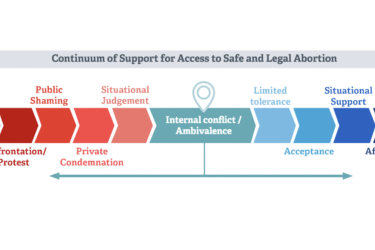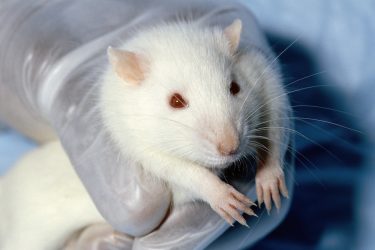
Those familiar with basic principles in physics are likely aware of the observer effect, the phenomenon by which simply observing subatomic particles affects the behavior of those particles. If even non-sentient subatomic particles act differently when they’re being observed, imagine what that means for creatures as social and self-aware as humans. The closest corresponding effect in people is called the Hawthorne effect, the phenomenon referring to the idea that people will change their behavior in response to discovering they are being observed.
If you’re just skimming this story post, here are some key takeaways:
- The Hawthorne effect refers to the idea that people change their behavior when they find out they’re being observed.
- This effect can have an impact on people’s behavior in studies that assess behavioral interventions or prevalence statistics for behaviors, such as how people eat during a nutrition study or how often they consume alcohol if they know they’ll need to report it.
- If a study involves people’s knowledge that they’re being observed during an activity, see if the authors address whether the Hawthorne effect is relevant in the study’s methodology or interpretation.
- If the authors don’t address it, consider whether you think it might be relevant and consider asking the authors and outside sources about the possibility, but also be aware of criticisms of the Hawthorne effect, including exaggeration of its impact or importance.
- When writing your story, consider whether the Hawthorne effect is relevant enough that it could have a substantial impact on the findings or their interpretation; if so, consider including an explanation of the phenomenon in your reporting and why it might be relevant.
- Videos here, here and here offer more in-depth discussions of the Hawthorne effect in research.
It probably doesn’t require much imagination to consider how the Hawthorne effect could impact the outcome of various studies, whether they’re experimental randomized controlled studies or observational studies, but it’s worth exploring what the effect is and what it means so you can be aware of whether it might play a role in studies you’re covering. If it could be involved, it’s worth asking the researchers whether they’ve accounted for that possibility — if it’s possible to do so — or at least what caveats might exist in drawing conclusions from study data.
More on The Hawthorne effect
The Hawthorne effect is relevant in a wide range of scenarios beyond medical research, including employment behavior, but within medical studies, it’s particularly relevant for behavioral and social science research and in research that involves behavioral interventions for a medical issue, such as adherence to medication, inpatient randomized controlled trials on prescribed diets, or trials looking at the impact of certain exercises in a controlled environment. For example, a person may perform differently on a treadmill while being observed by a study investigator than when the investigator is not in the room.
Studies into interpersonal behavior, such as medical studies that examine parents’ responsiveness and behavior toward infants or even toward older children, may also be affected by the Hawthorne effect. For example, some qualitative and quantitative studies looking at infant sleep, bedsharing, breastfeeding, nighttime parent or infant behavior, etc. might use cameras to observe behavior overnight. Parents may unconsciously act differently when they know they’re being filmed, which may not accurately represent their behavior when not being filmed. Sometimes these studies are looking at stress levels of parents, such as cortisol measurements, heart rate, or breathing rate, so variations in those metrics may be affected by the Hawthorne effect as much as by their infant’s behavior.
Why this effect may be relevant in medical studies
The Hawthorne effect may also be relevant in medical studies that look at physician, nurse or other health care workers’ behaviors. Clinicians who are aware they’re being observed may be more conscientious about behaviors such as hand hygiene or mask wearing, for example. This difference in behavior can have very real clinical impacts on patients. In a May 2017 JAMA Internal Medicine study, researchers analyzed patient mortality before and after unannounced accreditation surveys at U.S. hospitals by The Joint Commission. They found significantly lower mortality during survey weeks, especially in major teaching hospitals, suggesting that changes in health care workers’ behaviors were enough to impact patient health and survival. Harvard Business Review has a thoughtful article about the study.
Another study in 2007 explored whether the Hawthorne effect might impact the generalizability of clinical research into routine practice. It compared different intensity levels of follow-up of people in an RCT for Ginkgo biloba (for mild-moderate dementia) to see if their clinical outcomes differed. They found that more intensive follow-up was linked to better cognitive functioning than minimal follow-up. This study discusses controversies about the validity or utility of the Hawthorne effect in the research community and cites a paper from 2000 that critically observes that the Hawthorne effect is sometimes “used as a social equivalent to the placebo effect.” Other criticisms of the Hawthorne effect are that its effect is “minimal at best” and that it’s become “a catch-all term for labeling psychological and social factors that weren’t controlled for or that cannot be explained.”
The Hawthorne effect has been taken more seriously in recent years. In a 2015 article in BMJ, for example, the authors argue that blinding — supposedly one way to reduce the magnitude of the Hawthorne effect — is not actually effective at mitigating it, but that randomization is, since everyone, regardless of what arm they’re in, will know they’re in a trial (per the requirement for informed consent).
The fact that the Hawthorne effect can occur doesn’t invalidate a study. It’s simply a potential limitation or bias that may affect some studies, and in some cases, it cannot be controlled for. If you’re writing about a study involving observed behavior, however, it’s worth asking whether researchers have considered the possibility of the Hawthorne effect and/or if they figured that possibility into their analysis of the data.
For more on the Hawthorne effect, check out this video explaining where it came from and different ways it may show up in clinical research. This video shows how it’s now changing the landscape of clinical trials as a result of the pandemic halting clinical trials that had been in progress. This longer lecture explores the effect’s role in observational research.








